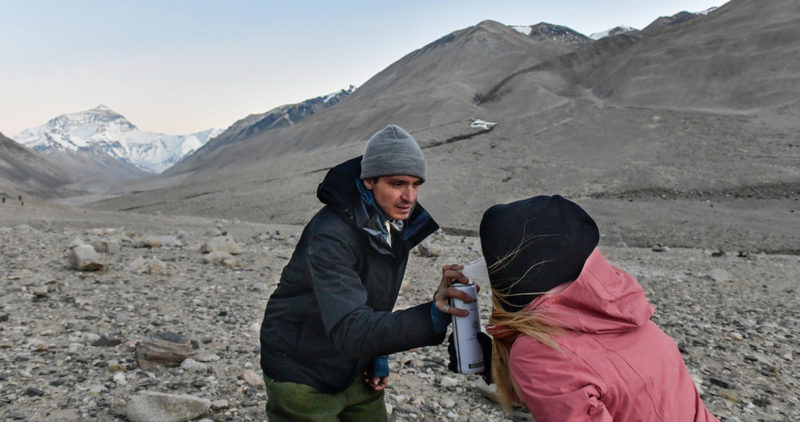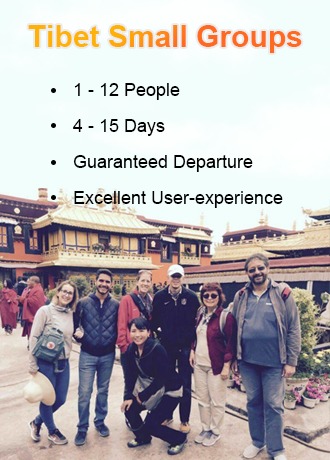Altitude Sickness
- by Caroline
- Last Updated: 2023-10-13
Many people are full of imagination and yearning for Tibet but there are many questions to figure out before planning a Tibet trip. Among all the matters, the concern about altitude sickness must come out first in most of the travelers' minds. In fact, altitude sickness is not that terrible. So, what is high-altitude sickness? And how to deal with altitude sickness when traveling to Tibet? Let's take a look at it.
What is Altitude Sickness?
As the name implies, altitude sickness is a series of physical discomfort due to changes in air pressure caused by high altitude, low oxygen content, and dry air when someone gets to a place with a high elevation, usually 3,000 meters (9,843 feet) and up. High altitude reaction, also known as altitude sickness, is a type of Acute Mountain Sickness(AMS).
The average altitude of Tibet is above 4,000 meters (13123.36 feet), so especially for those who live on the plain and get used to a low altitude, it’s not easy to adapt to the sudden change of the elevation.
What are the Symptoms of Altitude Sickness?
Headaches, fast heart beating, loss of appetite, difficulty breathing are mild symptoms when someone is getting altitude sickness. And they may always feel thirsty, dizzy, or tired, hard to fall asleep or could not sleep well at night, etc. Altitude sickness is a common and unique disease in plateau areas. Most people will experience one or more symptoms of AMS after arriving in Tibet. The symptoms usually will disappear within one or two days, which varies with different individuals. So travelers don't have to worry too much about altitude sickness.
Who Cannot Travel to Tibet?
Usually, if you are healthy, there is no problem for you to visit Tibet. But people who have cardiovascular or respiratory diseases are not suggested to travel to Tibet. For mild heart disease, please check with the doctor and do follow professional advice.
How to Deal with Altitude Sickness When Traveling to Tibet?
1) Take it easy. Please don’t be freaked out by altitude sickness, let alone stop your Tibet tour plan because of it. We should have a right understanding of altitude sickness. It’s hard to avoid it because the average altitude of the Tibet Autonomous Region is over 4,000 meters (13,124 feet). And the most popular tourist attractions like Everest Base Camp, Namtso, and Mt. Kailash, are around 5,000 meters (16,405 feet). According to our years of experience, nearly 99% of travelers will overcome altitude sickness after the beginning of two or three days.
Tips: You can try to take some exercise to keep your body in good. Get enough sleep and avoid catching a cold before traveling to Tibet. If you catch a cold, unfortunately, please contact your tour agent to postpone the trip.
2) Adapt to the altitude in Lhasa. The first stop of your Tibet tour is normally Lhasa. Not only because it’s the capital city of Tibet where there are rich tourist sources, such as the world-known Potala Palace, Jokhang Temple, Barkhor Street, etc. but also for the relatively lower elevation. With an elevation of 3,650 meters (11,975 feet), Lhasa is no doubt to be the perfect place for you to have sufficient rest and get adapted to the altitude change before launching to the next destination with a higher elevation.
Tips: It’s vital to have a good rest in the first two or three days of your Tibet tour. After transferring to the hotel on the first arrival day, it’s better to rest and do not take a bath to keep from catching a cold. If you could not help going out, try to pack light and stroll walk slowly. For a good sleep at night, please do not overeat at dinner. And you can use a high pillow to make sure your head is higher than the body, which is an excellent way to help you breathe. Even if you didn’t feel any uncomfortable when you get off the airplane or train, it doesn’t mean you will be good later. So, please keep the tips in mind.
3) Please always pay attention to the weather change during the whole trip. As you know, the temperature difference between daytime and night in Tibet is quite big. You may wear a T-shirt in the afternoon while wearing a down jacket in the evening. Thus, please prepare the necessary winter clothes even if you are traveling to Tibet in summer.
4) Regarding the food, please eat those easy to digest. And eat less food bought from unlicensed vendors, which may cause gastrointestinal disorders. Do not drink alcohol or smoke, or as little as possible. If you can take good care of yourself, the risk of getting altitude sickness will greatly decrease.
5) Prepare useful medicines. If you travel a lot, you will know what medications to prepare for a normal trip. But if for a Tibet tour, please bring some necessary medicines for curing altitude sickness. You can ask for help from your doctor before visiting Tibet. Nuodikang Capsules, Nifedipine, and Suoluomabao Capsules (known as Hongjingtian Capsules in Chinese) are the most common drugs for high altitude. Hongjingtian can be taken two or three days prior to the tour starting for prevention.
Tips: If you don’t feel well after taking medicines, please contact your tour guide and go to the hospital ASAP. Don’t underestimate the harm of altitude sickness. The worst case is getting a fever, which may cause death.

Conclusion
Altitude sickness is not horrible but could be defeated as long as you follow the correct guidance. Above all, you need to engage with a reliable Tibet tour company to make sure your Tibet travel interesting and safe. A good tour operator will take responsibility for your physical health and mental satisfaction. As a local Tibet travel agency, Great Tibet Tour arranged thousands of Tibet tours for foreigners since 2005. Besides the handpicked itineraries, we also do our best to make sure our clients complete the tour smoothly. We always have the Oxygen tank & some medicines in the vehicle for emergency use. Meanwhile, our experienced Tibetan guide will take measures according to different circumstances. And we will send you to the hospital if you are not feeling well.
Related Articles
- Frequently Asked Questions
- Nyingchi Travel Guide
- Why Visit Tibet in Winter?
- Tulin Castle Hotel
- Kathmandu Altitude: Elevation List of Main Areas and Nearby Travel Destinations
- 7 Useful Things to Know Before Going to Tibet
- Lhasa Altitude: Main Attractions with Various Elevations
- How to Get to Ngari?
- How to Plan a Tibet Tour on a Budget?
- How to Get to Shigatse?
Email response within 0.5~24 hours.




Typically Asked Questions from Our Clients
Asked by lim ***
Hi, my friend had been to your tour to tibet recently and recommended me your company. I am planning a 6 nights tibet trip in mid of May 2024 and would like to enquiry on your tour. Its a group of 4. We planned to flight in from Chengdu, tour for 6 night, then take the train from Lhasa to Xining. Could you help to include in the cost for buying the soft bed train ticket for us. As we are a bit of age, appreciate it if you could removed all mountain tour, inculding the based camp, for our trip. Do include also the information on how the tibet docs will be send or pass to us. Thankyou and awaits your reply
Dear Lim,
As per your request, I recommend 6 days Lhasa Gyantse Shigatse group tour for you. For this 6 days group tour, we don't have an opening date on 12 May but on 10 May 2024. What's your idea?
We can help you book the soft sleeper train tickets from Lhasa to Xining with a ticket service fee. For the Tibet Permit, we'll send it to your hotel in Chengdu by Express.
Please note, Tibet is not suitable for all seniors, especially those with high blood pressure, respiratory, cardiovascular or cerebrovascular diseases, heart disease, pulmonary edema, etc. I suggest you consult your doctor before making a decision.